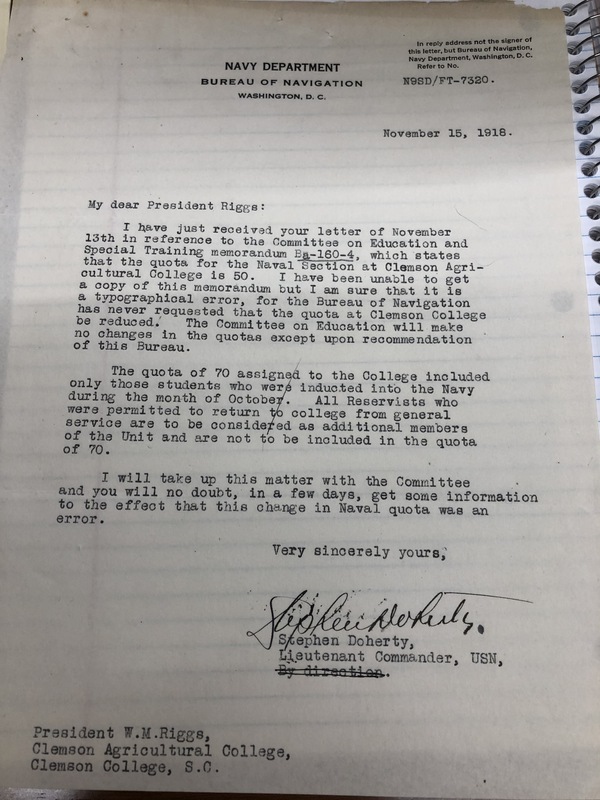Upstate and Clemson College
Walter Riggs, despite being a native of Orangeburg, became one of the most prominent figures in the South Carolina upstate during World War I. After becoming president of Clemson College in 1909, Riggs worked closely with farmers in the upstate and with prominent South Carolina families who sent their sons to Clemson. The U.S. began preparing for the war as early as 1914, by encouraging farmers to grow more food and cotton for the war effort. In April of 1917, Riggs was asked to increase the production of food in South Carolina by the U.S. Department of Agriculture (USDA), with the U.S. now entering the war. As president of a military college, Riggs also had to prepare his students for the possibility of serving in the war. This included making important changes such as limiting the supplies the cadets received and cracking down on discipline.
Riggs was also asked to help implement day light savings in South Carolina. Riggs also had the duty to help the families of the Upstate and who had sons at Clemson. He often recommended his former students to become officers and communicated with the families of both current and former students about their sons heading to war. He also received letters asking him to reinstate young men who had left to help their families on the farm at the outbreak of the war. He also kept in contact with his former students throughout the duration of the war and after. In one letter, former Clemson student and current soldier, Leo R. Briggs, informs Riggs that he was saddened that the war ended right after he arrived in France, and he never got to fight but was excited for the opportunity to attend college in France. Riggs would later head to France himself to oversee such educational experiences.









